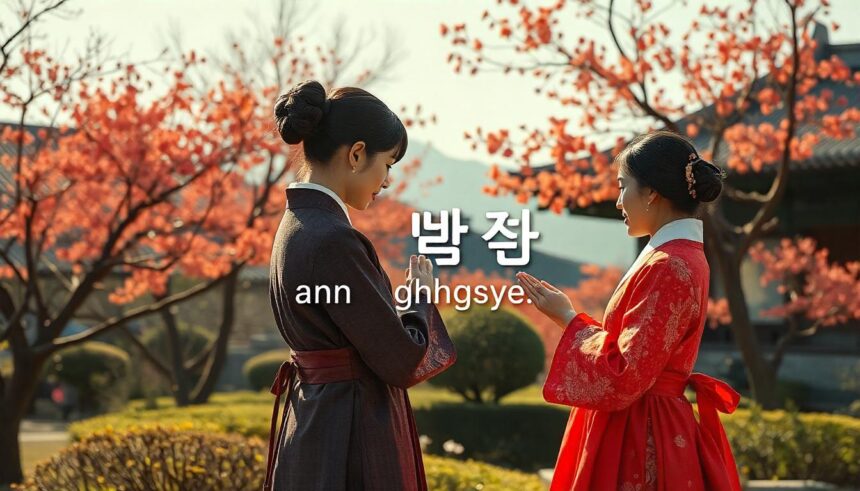Introduction to Korean Greetings
Are you curious about how to say hi in Korean? Greetings are the gateway to any culture, and mastering them can help you connect with people on a deeper level. Whether you’re planning a trip to South Korea or simply want to impress your Korean friends, knowing the right way to greet someone is essential.
Korean greetings go beyond just saying hello; they reflect respect, relationships, and cultural nuances. As we dive into this topic, you’ll discover not only basic phrases but also tips for navigating the subtleties of formal versus informal interactions. Let’s unlock the world of Korean greetings together!
Basic Phrases for Greeting Someone in Korean
When you meet someone in Korea, a warm greeting sets the tone for your interaction. The most common way to say “hi” is “안녕하세요” (annyeonghaseyo). This phrase is versatile and can be used throughout the day.
If you’re feeling more casual, especially with friends, try “안녕” (annyeong). It’s friendly and relaxed, perfect for informal settings.
For those special occasions or when addressing elders, use “안녕하십니까?” (annyeonghasimnikka). This formal version shows respect and creates a positive impression.
Don’t forget to smile! A genuine smile enhances any greeting. Remember that body language also plays a key role in Korean culture, so maintaining eye contact while bowing slightly can make your salutation even warmer.
Formal vs. Informal Greetings
Korean greetings vary significantly based on formality. This distinction is essential in Korean culture.
When addressing someone older or in a professional setting, you use formal expressions. The most common greeting is “안녕하세요” (annyeonghaseyo), suitable for most situations. It shows respect and politeness.
Conversely, when chatting with friends or younger people, informal greetings are more appropriate. You might say “안녕” (annyeong). This casual phrase creates a relaxed atmosphere.
Context determines which greeting to use. Knowing the right level of formality helps build connections and demonstrates cultural awareness. Missteps can lead to misunderstandings, so choose wisely!
Common Mistakes to Avoid
When learning how to say hi in Korean, it’s easy to make a few common mistakes. One frequent error is using the wrong level of formality. Koreans place great importance on hierarchy and respect. Using informal greetings like “안녕” (annyeong) with someone older or in a position of authority can be seen as disrespectful.
Another mistake involves mispronunciation. The nuances in pronunciation can change meanings entirely. Make sure you practice saying “안녕하세요” (annyeonghaseyo) clearly.
Many learners also forget that body language plays a key role in greetings. Bowing slightly while greeting someone shows respect and acknowledgment, which is an integral part of Korean culture.
Avoid jumping straight into conversation after greeting someone. Take a moment to exchange pleasantries first; it sets a friendly tone for your interaction.
Cultural Significance of Greetings in Korean Society
Greetings in Korean culture go beyond mere words; they embody respect and connection. When you say “안녕하세요” (annyeonghaseyo), it’s not just a casual hello. It’s a gesture that acknowledges the other person’s presence and status.
Korean society places high value on hierarchy, especially regarding age and social standing. The way you greet someone often reflects this relationship. For instance, using formal language with elders shows deference, while informal greetings are reserved for friends or younger individuals.
Moreover, greetings act as an icebreaker in daily interactions. They set the tone for future conversations and foster community ties. Understanding these nuances can enhance your experience when communicating in Korea.
In essence, mastering how to say hi in Korean is about more than vocabulary—it’s an entry point into rich cultural traditions and values that shape social dynamics every day.
Other Useful Phrases for Social Interactions
When engaging in social interactions in Korea, it’s helpful to know a few additional phrases beyond just saying hi. These expressions can make conversations more enjoyable and meaningful.
For instance, if you want to ask someone how they are, simply say “잘 지내세요?” (jal jinaeseyo?). This shows genuine interest in their well-being.
If you’re meeting someone for the first time, you can introduce yourself by saying “저는 [your name]입니다” (jeoneun [your name]-imnida). It’s polite and effective.
Another useful phrase is “감사합니다” (gamsahamnida), which means thank you. Expressing gratitude is essential in Korean culture and fosters goodwill.
Don’t forget about greetings when parting ways. Saying “안녕히 가세요” (annyeonghi gaseyo) if they’re leaving or “안녕히 계세요” (annyeonghi gyeseyo) if you’re leaving makes your farewell warm and respectful.
Conclusion
Mastering how to say hi in Korean opens up a whole new world of communication and cultural exchange. Whether you’re traveling, meeting new friends, or diving into the rich tapestry of Korean culture, greetings are your gateway to connection.
Understanding the nuances between formal and informal greetings is crucial. It reflects respect and awareness of social hierarchies that are deeply embedded in Korean society. By avoiding common mistakes—like using casual phrases with elders—you can make a positive impression.
Korean greetings carry significant cultural importance. They set the tone for interactions and reflect values like politeness and community. Learning other useful phrases will further enhance your ability to engage meaningfully with others.
Embrace these expressions as part of your journey into learning Korean. Each greeting not only facilitates conversation but also fosters connections across cultures—a truly enriching experience!







